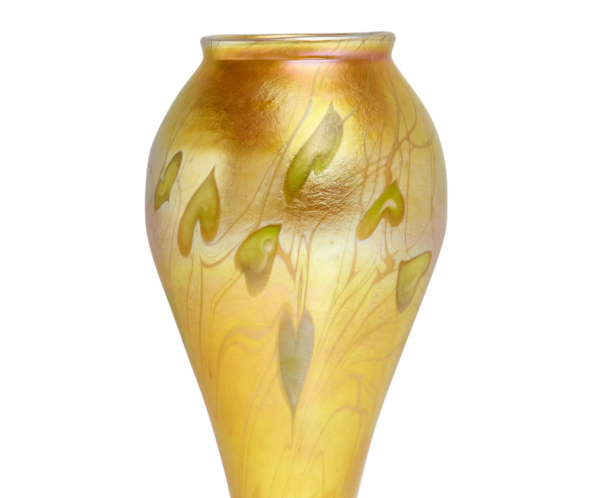Louis Comfort Tiffany was the son of Charles Lewis Tiffany, founder of Tiffany & Co – the renowned silver and jewellery firm. Louis chose to pursue his own artistic interests and went on to become one of the most creative and prolific designers of the late 19th century - embracing virtually every artistic and decorative medium, designing and directing his studios to produce leaded-glass windows, mosaics, lighting, glass, pottery, metalwork, enamels, jewellery and interiors.
Having been a painter in early adult life, in the late 1870s Tiffany turned his attention to decorative arts and interiors. He had begun studying chemistry and techniques of glassmaking when he was 24, and in 1885 Tiffany established his own firm. He undertook decorating commissions, but his focus was on new methods of glass manufacture.
In the late 1890s, Tiffany built a glasshouse in New York, and alongside Arthur Nash, a skilled glassworker from Stourbridge, developed new methods of glass making. Tiffany named the blown glass from his furnaces ‘Favrile’, from the old English word for hand-wrought ‘fabrile’, signifying glass of hand-made and unique quality. The iridescent effect of favrile glass was achieved by treating it with metallic oxides and exposing it to acid fumes. It was originally intended to re-create the effects seen on ancient Roman glass. Favrile glass quickly gained international renown.
Tiffany was knowledgeable about jewellery trends and was appointed art director of his father’s firm in 1902. In addition to enamels, Favrile glass vessels, and pottery, Tiffany’s unusual and stunning jewellery was very well received by the art critics of the period.
Tiffany and his studios are particularly well known for another venture commenced in 1898—lighting and lamps. Although Tiffany’s craftsmen used patterns to make lampshades, each was unique due to the selection of the individual pieces of glass with their varied colours and densities. Centuries-old methods of joining pieces of glass together with metal resulted in the now well-recognised stained-glass designs. The most expensive Tiffany lamps have fetched over a million pounds at auction.
